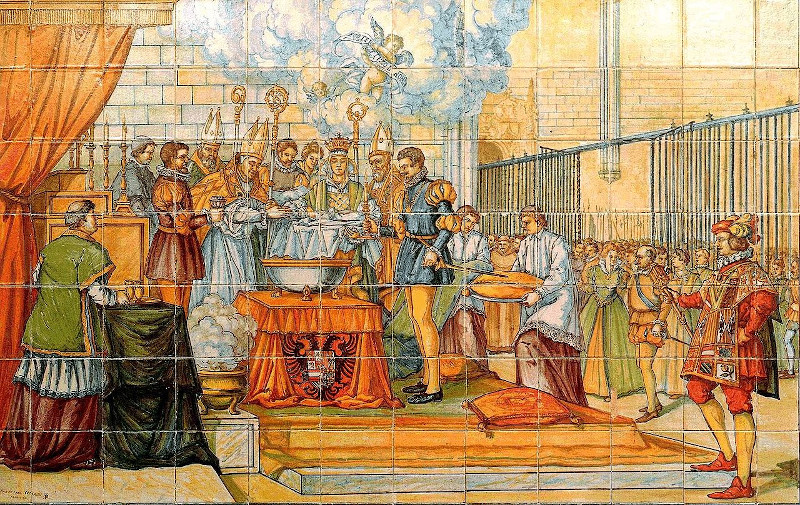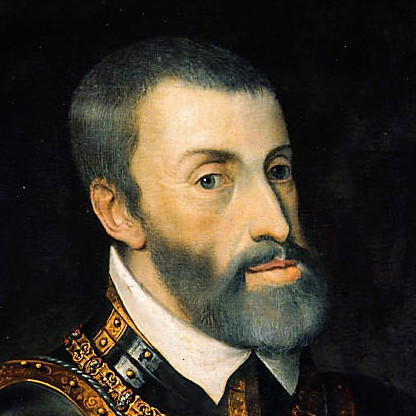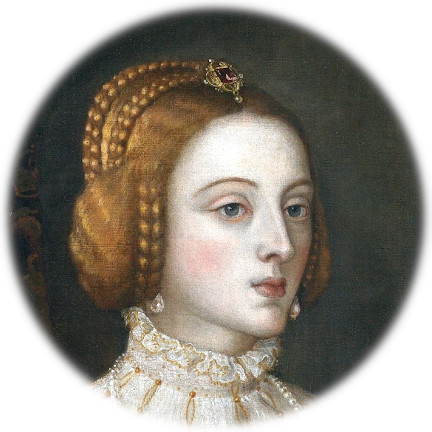05/21/1527 AD born
A member of the House of Habsburg, Philip was the son of Emperor Charles V, who was also king of Castile and Aragon, and Isabella of Portugal.
He was born in the Castilian capital of Valladolid at Palacio de Pimentel, which was owned by Don Bernardino Pimentel (the first Marqués de Távara). The culture and courtly life of Castile were an important influence in his early life. He was entrusted to the royal governess Leonor de Mascareñas, and tutored by Juan Martínez Siliceo, the future archbishop of Toledo. Philip displayed reasonable aptitude in arts and letters alike. Later he would study with more illustrious tutors, including the humanist Juan Cristóbal Calvete de Estrella.
Though Philip had good command over Latin, Spanish, and Portuguese, he never managed to equal his father, Charles V, as a polyglot. While Philip was also an archduke of Austria, he was seen as a foreigner in the Holy Roman Empire. The feeling was mutual. Philip felt himself to be culturally Spanish; he had been born in Castile and raised in the Castilian court, his native language was Spanish, and he preferred to live in the Spanish kingdoms. This ultimately impeded his succession to the imperial throne.
In April 1528, when Philip was eleven months old, he received the oath of allegiance as heir to the crown from the Cortes of Castile. From that time until the death of his mother Isabella in 1539, he was raised in the royal court of Castile under the care of his mother and one of her Portuguese ladies, Doña Leonor de Mascarenhas, to whom he was devotedly attached. Philip was also close to his two sisters, María and Juana, and to his two pages, the Portuguese nobleman Rui Gomes da Silva and Luis de Requesens, the son of his governor Juan de Zúñiga. These men would serve Philip throughout their lives, as would Antonio Pérez, his secretary from 1541.
Philip's martial training was undertaken by his governor, Juan de Zúñiga, a Castilian nobleman who served as the commendador mayor of Castile. The practical lessons in warfare were overseen by the Duke of Alba during the Italian Wars. Philip was present at the Siege of Perpignan in 1542 but did not see action as the Spanish army under Alba decisively defeated the besieging French forces under the Dauphin of France. On his way back to Castile, Philip received the oath of allegiance of the Aragonese Cortes at Monzón.
His political training had begun a year previously under his father, who had found his son studious, grave, and prudent beyond his years, and having decided to train and initiate him in the government of the Spanish kingdoms. The king-emperor's interactions with his son during his stay in Castile convinced him of Philip's precocity in statesmanship, so he determined to leave in his hands the regency of the Spanish kingdoms in 1543. Philip, who had previously been made the Duke of Milan in 1540, began governing the most extensive empire in the world at the young age of sixteen.
Subjects Who or What born?
-
Philip II of Spain (Felipe el Prudente, the Prudent) King of Spain and ...
Objects To Whom or What was born?
-
Charles V, Holy Roman Emperor (Karl V, Don Carlos I of Spain) Holy Roman Emperor 1519 ...
-
Isabella of Portugal (Empress of the Carnation) Holy Roman Empress...
Events in 1527 MORE













